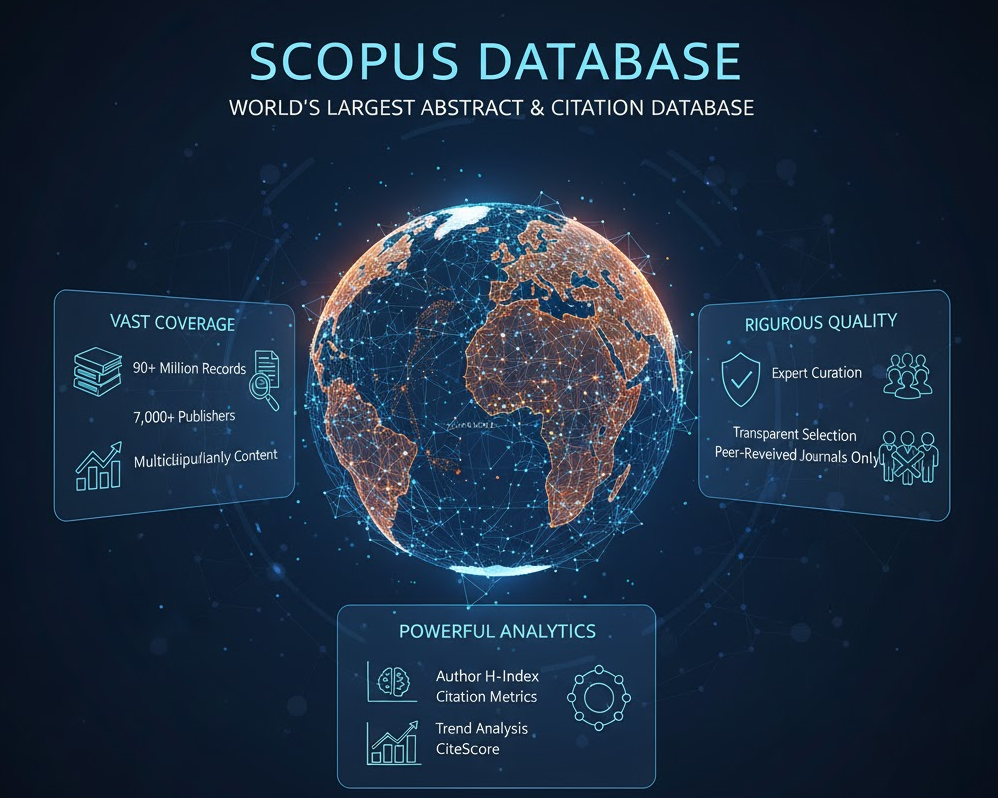

224 views||Release time: Oct 16, 2025
In the vast ecosystem of academic research, finding, tracking, and analyzing scholarly literature is a monumental task. For millions of researchers, librarians, and institutional leaders, the go-to tool for this is Scopus. Launched in 2004 by the publishing giant Elsevier, Scopus has established itself as the world's largest abstract and citation database.

But what does "largest" actually mean in this context? It's not just about the number of documents. The status of Scopus is built on a foundation of comprehensive content, rigorous curation, and powerful analytical tools that, together, create an unparalleled resource for the global research community.
At its heart, Scopus's claim to being the largest is based on the sheer volume and breadth of its content. As of today, the database includes:
Over 90 million records, including articles, conference papers, book chapters, and patents.
Tens of thousands of active, peer-reviewed journals, with a significant portion from international publishers.
Hundreds of thousands of books and millions of conference papers.
This massive collection is sourced from over 7,000 publishers globally, ensuring it is not just an Elsevier-centric library but a comprehensive snapshot of the world's research output. The database is updated daily, providing access to the most current scientific literature.
Unlike specialized databases that focus on a single field, Scopus provides a truly multidisciplinary perspective. Its content is categorized into four broad subject areas:
Physical Sciences (e.g., Engineering, Computer Science, Physics)
Health Sciences (e.g., Medicine, Nursing, Pharmacology)
Social Sciences (e.g., Arts and Humanities, Business, Psychology)
Life Sciences (e.g., Biology, Neuroscience, Agricultural Sciences)
This broad coverage is a critical advantage. It allows researchers to conduct interdisciplinary studies, discover connections between different fields, and track the impact of their work across the entire academic spectrum.
"Largest" does not mean that Scopus includes everything. The quality and integrity of the database are maintained by the independent Scopus Content Selection & Advisory Board (CSAB), an international group of subject experts.
For any journal, book, or conference series to be included in Scopus, it must pass a rigorous evaluation based on a combination of quantitative and qualitative criteria, including:
A robust peer-review policy.
A diverse and reputable editorial board.
A consistent and timely publication schedule.
Scholarly quality and relevance to an international audience.
This transparent curation process ensures that the vastness of Scopus is matched by its quality and reliability.
Scopus is more than just a library; it's an analytical engine. It uses its massive dataset to provide powerful insights for researchers and institutions:
Author and Affiliation Profiles: Scopus automatically creates detailed profiles for millions of authors and institutions, making it easy to track research output, citation metrics (like the h-index), and identify potential collaborators.
Advanced Search and Analytics: Researchers can perform complex searches to discover emerging trends, analyze the research performance of a specific field, and find the most impactful journals to publish in.
CiteScore Metric: Scopus provides its own journal performance metric, CiteScore, which measures the average citations received per document. It serves as a comprehensive and transparent alternative to the traditional Journal Impact Factor (JIF).
The other major player in this space is Clarivate's Web of Science (WoS). While both are premier databases, they have different strengths:
Scopus is generally considered to have broader coverage, especially in terms of international journals, conference proceedings, and newer publications.
Web of Science is known for its deeper historical coverage (with records dating back further) and its prestigious, highly selective Journal Impact Factor (JIF), which remains a key benchmark for journal evaluation in many institutions.
Conclusion
Scopus earns its title as the "world's largest abstract and citation database" not just from the immense number of documents it holds, but from its commitment to broad, multidisciplinary coverage, rigorous quality control, and the powerful analytical tools it provides. For the modern researcher, it is an indispensable ecosystem for discovering knowledge, tracking impact, and navigating the global landscape of scientific communication.